Dorm Room Bingo
Dorm room bingo

More Posts from Psyxe and Others

Fireflies
Continuation from this post: some other “these events happened at about the same time or close together in history” things:
- The French Revolution happened shortly after the American Revolution, and the Haitian Revolution happened shortly after the French Revolution, and the big wave of revolution that freed Latin America from Spanish control happened shortly after the Haitian Revolution. I think this wasn’t a coincidence: these revolutions were connected!
- The first civilizations arose in Egypt and Mesopotamia at the end of the great drying of the Sahara and Arabia. Again, I think this wasn’t a coincidence! The drying climate meant people had to rely more on big labor-intensive irrigation works, which meant that cooperation and coordination on a large scale became more important. The great drying probably drove refugees into the Nile valley and the lands around the Tigris and Euphrates, increasing the population density of those regions. This would have meant even more reliance on labor-intensive large-scale irrigation, and also those extra people would have helped staff the work-gangs, work-shops, and armies of the new kings. The influx of refugees probably also meant a mixing of cultures, which probably stimulated technological, cultural, and institutional innovation.
- The peopling of the Americas and the first experiments with grain farming in the Middle East might have been happening at about the same time.
- The Norman conquest of England was within living memory at the time of the First Crusade.
- The Classical Maya period was 250-900 CE, roughly coinciding with the late Roman Empire and the Dark Ages in Europe. The collapse of the Classical Maya centers was during the 900s, about a century or two after Charlemagne’s time (IIRC the 900s CE is around the end of the Danelaw period in England).
- The moai (the big heads) of Easter Island aren’t ancient; they were built during the late Middle Ages and the early modern period.
- New Zealand was peopled during the Middle Ages, IIRC some centuries after the peopling of Iceland. New Zealand was one of the last lands on Earth to be peopled.
- Lady Murasaki lived in the late 900s and early 1000s CE; a little before the Norman conquest of England. To me Heian-period and pre-Heian Japan feels like the Bronze Age, but it’s from a completely different period of history; it existed in the same world as Vikings and Charlemagne and the Tang Dynasty; I think that’s interesting. Speaking of Japanese history, the Japanese warring states period and the height of classic samurai feudalism was the 1400s and 1500s.
- Australia was peopled at least 30,000 years before the Americas, and Homo sapiens expansion into northern Eurasia seems to have taken much longer than Homo sapiens peopling of Australia. There’s a lesson in this: cold seems to have been a more daunting barrier than ocean. That makes sense in a way: the Homo sapiens out-of-Africa migrants were likely tropical/subtropical coast-dwellers, and they could have just followed the tropical/subtropical southern coast of Asia all the way to Java (which you could have walked to from Asia back then because sea levels were lower), never leaving warm coastal regions. After that they would have needed just one big innovation to reach Australia: sea-worthy boats. Adapting to the cold northern regions of ice age Eurasia would have required more radical changes to their tool-kit and lifestyle. I think something similar happened in the Americas: there are surprisingly old signs of human presence in South America, and I suspect what happened is the first Americans were fisher-whaler-beachcomber people who lived on a stretch of ice-free coast between the Pacific and the ice age North American glaciers, and as they expanded they mostly just followed the coast south, and they kept doing that until some of them reached Tierra del Fuego within maybe a few centuries. If an alien visited Earth around 13,500 BCE I think they might have found a few tens of thousands of people living along the west coast of the Americas from Alaska to Tierra del Fuego and the rest of the Americas still almost uninhabited (maybe there’d be a few thousand people living in the inland hills of California and the inland jungles of Central America, but that’d be about it). Only the most adventurous early Americans moved inland, where they’d have to survive without the resources of the sea and the beach, and became the Clovis People and other inland early American hunter-gatherer cultures. I wouldn’t be surprised if there were humans living along the shores of the Straight of Magellan before there were humans living in the Sierra Nevada mountains of California.
A somewhat different but related thing: communicating the sheer length of ancient Egyptian history:
- Sargon the Great gets called the first empire-builder, but I think that title really should belong to Narmer, or whoever the first Pharaoh of a unified Egypt was. We often don’t think of Narmer as an empire-builder for the same reason we often don’t think of Qin Shi Huangdi’s great empire as an empire: the empire was so successful and enduring that it eventually started to look like a natural fact of human cultural geography. You know your empire has really succeeded when most people don’t think of it as an empire! Sargon the Great lived about 800 years after Narmer, so the difference in time between them is similar to the difference in time between Julius Caesar and Charlemagne.
- The Great Pyramids were built in the 2500s and early 2400s BCE, about 500 years after Narmer’s reign. This was early in Egyptian history! I think it’s interesting that the Egyptians did this huge construction project early in their history and never did anything like that again. I really wonder what happened there. Did building the Great Pyramids ruin the economy? Did the mobilization of the huge workforce needed to build the Great Pyramids stir up the disease pool and cause plagues (did something similar happen when Amarna was built and populated and did that contribute to the failure of the Atenist reformation?)? Anyway, like I said, the Great Pyramids were built relatively early in Egyptian history … though the time difference between Narmer and the builders of the great pyramid was comparable to the difference in time between us and Columbus and Henry VIII!
- There were three most ancient centers of civilization that emerged at about the same time: Mesopotamia, Egypt, and the Indus Valley Civilization. The Indus Valley Civilization collapsed around 2000 BCE and we don’t know much about it; we can’t read their writing. I think it’d be fascinating if we could learn more about the Indus Valley Civilization! Were they politically fragmented, like Mesopotamia, or were they a single state, like Egypt? There’s some evidence that might suggest the latter, but it’s impossible to know! So many unanswered questions!
- The Thera eruption that might have contributed to the decline of Minoan civilization happened around 1600 BCE. This was around the same time as the Hyksos rule in northern Egypt; if I’m reading my Wikipedia skimming right there’s a record of the Thera eruption recorded on a stelae set up by the Pharaoh who reconquered northern Egypt from the Hyksos!
- Tutankhamun lived in the mid-1300s BCE. Tutankhamun lived more than a thousand years after the Great Pyramids were built! The builders of the Great Pyramids were as distant from Tutankhamun as the Vikings are from us!
- And Cleopatra (the famous one, Cleopatra VII) lived about 1300 years after Tutankhamun! Tutankhamun was as distant from Cleopatra as Charlemagne is from us! And the Great Pyramids were about 2500 years old in Cleopatra’s time; their construction was about as distant from her as Buddha, Confucius, and Socrates are from us! As that meme says: Cleopatra lived closer to the construction of the moon rockets than the construction of the Great Pyramids.
Remember when I said Pharaonic Egypt and the US kind of remind me of each other? Well, the US is less than 250 years from its founding. 250 years from the founding of the unified Egyptian state they’d just recently stopped doing human sacrifice (the earliest Pharaohs were buried with human retainer sacrifices, about a century or so into the Pharaonic period they stopped doing that and switched to burying the Pharaohs with little dolls that were supposed to substitute for the servants) and they were just building the Step Pyramid of Djoser, just beginning the pyramid-building tradition that would culminate in the Great Pyramids centuries later.
Alternately, the other culture that really reminds me of Pharaonic Egypt is China, and its Narmer-equivalent lived after Alexander the Great. The Chinese still have about 800 years to go before they can say their civilization-state is as enduring as Pharaonic Egypt!
I really wonder if the Pharaonic Egyptian religion would still be going strong if Christianity and Islam hadn’t come along. It survived for so long!
since “what are those” exists in the marvel universe, it’s safe to assume that vine does as well. the “it is wednesday my dudes” vine was posted in 2015, and civil war was released in 2016, so it can be argued that the vine has an entirely new layer of comedy in the marvel universe, as spiderman didn’t exist when the vine was posted, and the man in the vine is just wearing a bizarre costume with no cultural meaning or reference. it can be concluded that peter parker designed his costume based off the “it is wednesday my dudes” guy. in this essay i will—
You do not have to be valid.
You do not have to scroll through your notes
For a hundred hours repenting
You only have to let the problematic animal of your body love what it loves.
I think one of the best names of a real-world geographical location is “the Inaccessible Pinnacle of Sgùrr Dearg"
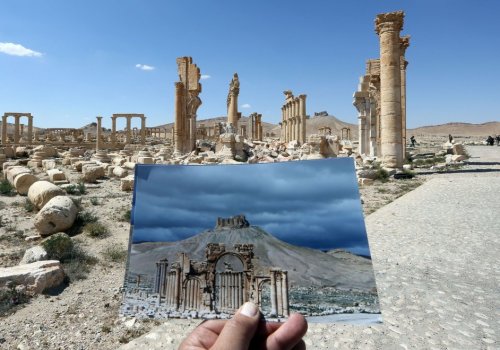
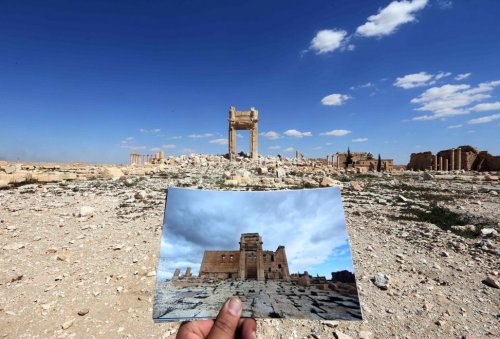
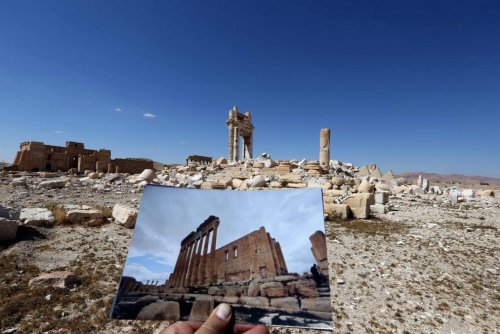
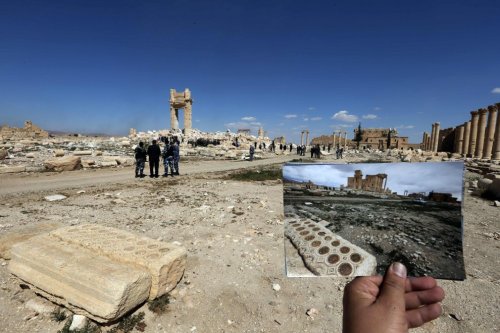
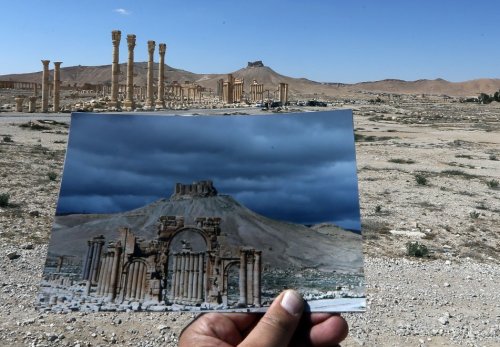
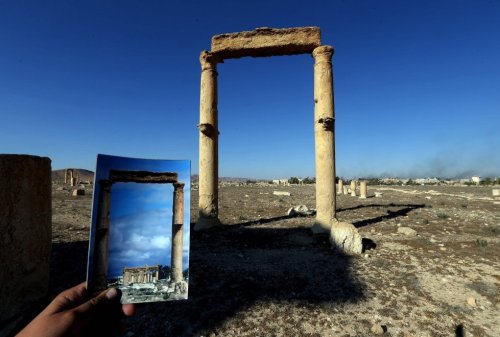
Pictures of the UNESCO World Heritage site of ancient Palmyra taken following the recapture of the city by Syrian troops backed by Russian forces on March 27, 2016 show the damage made by ISIS during its 10-month occupation. In 2015 the archaeologist, Khaled al-Asaad, who had looked after the ruins for 40 years and refused to reveal the location of archaeological treasures of the city was also murdered by ISIS.
Photos taken on March 31, 2016 by Joseph Eid/AFP/Getty Images
Fortnite Kelsier appeals to me for the same reason that Canon Destiel Putin Election Night was fucking great and its that i like feeling like my brain is sizzling in a frying pan with a bunch of glitter

The guitars of Tinariwen, a Sahara based Tuareg rock band.

None of the scientists I spoke to for this story were at all surprised by either outcome — all said they expected the vaccines were safe and effective all along. Which has made a number of them wonder whether, in the future, at least, we might find a way to do things differently — without even thinking in terms of trade-offs. Rethinking our approach to vaccine development, they told me, could mean moving faster without moving any more recklessly. A layperson might look at the 2020 timelines and question whether, in the case of an onrushing pandemic, a lengthy Phase III trial — which tests for efficacy — is necessary. But the scientists I spoke to about the way this pandemic may reshape future vaccine development were more focused on how to accelerate or skip Phase I, which tests for safety. More precisely, they thought it would be possible to do all the research, development, preclinical testing, and Phase I trials for new viral pandemics before those new viruses had even emerged — to have those vaccines sitting on the shelf and ready to go when they did. They also thought it was possible to do this for nearly the entire universe of potential future viral pandemics — at least 90 percent of them, one of them told me, and likely more.
As Hotez explained to me, the major reason this vaccine timeline has shrunk is that much of the research and preclinical animal testing was done in the aftermath of the 2003 SARS pandemic (that is, for instance, how we knew to target the spike protein). This would be the model. Scientists have a very clear sense of which virus families have pandemic potential, and given the resemblance of those viruses, can develop not only vaccines for all of them but also ones that could easily be tweaked to respond to new variants within those families.
[…]
According to Florian Krammer, a vaccine scientist at Mount Sinai, you could do all of this at a cost of about $20 million to $30 million per vaccine and, ideally, would do so for between 50 and 100 different viruses — enough, he says, to functionally cover all the phylogenies that could give rise to pandemic strains in the future. (“It’s extremely unlikely that there is something out there that doesn’t belong to one of the known families, that would have been flying under the radar,” he says. “I wouldn’t be worried about that.”) In total, he estimates, the research and clinical trials necessary to do this would cost between $1 billion and $3 billion. So far this year, the U.S. government has spent more than $4 trillion on pandemic relief. Functionally, it’s a drop in the bucket, though Krammer predicts our attention, and the funding, will move on once this pandemic is behind us, leaving us no more prepared for the next one. When he compares the cost of such a project to the Pentagon’s F-35 — you could build vaccines for five potential pandemics for the cost of a single plane, and vaccines for all of them for roughly the cost of that fighter-jet program as a whole — he isn’t signaling confidence it will happen, but the opposite.
[…]
If we do all that, he says, the entire timeline could be compressed to as few as three months. The production and distribution of a vaccine adds considerable cost, bureaucracy, and even some chaos, as we’re likely about to see. But three months from the design of the Moderna vaccine was April 13. The second and third surges, the return to school and the long-dreaded fall, 225,000 more deaths and 50 million more infections — all of that still lay ahead. Shave another month off somehow and you’re at March 13, the day the very first person in New York City died.
The “Beau Biden Cancer Moonshot“ authorized $1.8 billion over seven years for cancer research in 2016, don’t know what he’s planning on doing as president but this would be an excellent use of research money, Wouldn’t say no to both though.
ANTHROPOLOGY
Homecoming
High schools in the south of the United States, especially in Texas, often have a tradition of the girls wearing “mums” and boys wearing “garters” to the Homecoming football game. Mums usually consist of artificial Chrysanthemum flowers (originally real Chrysanthemums were used) surrounded by decorated floor-length ribbon and little trinkets. The tradition is that the boys create a personalized mum in their school colors, white and silver for seniors, for their date. Girls make garters for their date which are similar to mums but shorter and worn on the guy’s arm rather than around their neck like mums. The size of the mums and garters tend to grow along with the grade the person that is receiving the mum is in. Around the 1980s, mums were usually about a maximum of three Chrysanthemum flowers and a few ribbons and only worn by the Homecoming Court/Homecoming Prince and/or Princess but as the years have gone by, the size and expectations of mums have increased and have gotten more elaborate and are worn by almost all of the students. Depending on the school, mums can get quite competitive, expensive, and drastically bigger than they previously were intended to be. New items are also placed on mums than there previously were like LED lights, bubble containers, cow bells, feather boas, stuffed animals of all sizes, and even more. They now sometimes act like scrapbooks made of ribbon and even contain passages and photos of the mum/garter-receiver and their date. The detail, size, and price usually varies depending on the school, town, and couple. The tradition is to make the mum and garter after the couple is asked to Homecoming and exchange the night of the Homecoming game and wear it throughout tailgating and the game. Couples often take group pictures with their mums and garters the night of or before the night of the Homecoming Game to showcase them.
Link
-
 rockinlibrarians-archive reblogged this · 1 month ago
rockinlibrarians-archive reblogged this · 1 month ago -
 can-u-smell-that-thats-comedy reblogged this · 1 year ago
can-u-smell-that-thats-comedy reblogged this · 1 year ago -
 moviel0v3er liked this · 1 year ago
moviel0v3er liked this · 1 year ago -
 ycfyitto liked this · 1 year ago
ycfyitto liked this · 1 year ago -
 mikudave reblogged this · 1 year ago
mikudave reblogged this · 1 year ago -
 danielledreamsthedayaway liked this · 1 year ago
danielledreamsthedayaway liked this · 1 year ago -
 thotifypremium reblogged this · 1 year ago
thotifypremium reblogged this · 1 year ago -
 thotifypremium liked this · 1 year ago
thotifypremium liked this · 1 year ago -
 badd-knees liked this · 1 year ago
badd-knees liked this · 1 year ago -
 eggohairpin liked this · 1 year ago
eggohairpin liked this · 1 year ago -
 raenewbae liked this · 1 year ago
raenewbae liked this · 1 year ago -
 rubydacherry59 liked this · 1 year ago
rubydacherry59 liked this · 1 year ago -
 cola0069 liked this · 1 year ago
cola0069 liked this · 1 year ago -
 cryptidsenpai liked this · 1 year ago
cryptidsenpai liked this · 1 year ago -
 icecreamtacos liked this · 1 year ago
icecreamtacos liked this · 1 year ago -
 queerdungeonsnerd liked this · 1 year ago
queerdungeonsnerd liked this · 1 year ago -
 childkingofhell liked this · 1 year ago
childkingofhell liked this · 1 year ago -
 julieblog2424 liked this · 1 year ago
julieblog2424 liked this · 1 year ago -
 nonepizza liked this · 1 year ago
nonepizza liked this · 1 year ago -
 boringsyndromeinfection liked this · 1 year ago
boringsyndromeinfection liked this · 1 year ago -
 sourbbyxo liked this · 1 year ago
sourbbyxo liked this · 1 year ago -
 multi-fandom-fangirl101 liked this · 1 year ago
multi-fandom-fangirl101 liked this · 1 year ago -
 qxbrtni liked this · 1 year ago
qxbrtni liked this · 1 year ago -
 murkymush liked this · 1 year ago
murkymush liked this · 1 year ago -
 marythecrow liked this · 1 year ago
marythecrow liked this · 1 year ago -
 cherrycolorsoot liked this · 1 year ago
cherrycolorsoot liked this · 1 year ago -
 waitwhatnowhy liked this · 1 year ago
waitwhatnowhy liked this · 1 year ago -
 worldboxingmanager liked this · 1 year ago
worldboxingmanager liked this · 1 year ago -
 vickzelated liked this · 1 year ago
vickzelated liked this · 1 year ago -
 4inchfae liked this · 1 year ago
4inchfae liked this · 1 year ago -
 lacisplace24 liked this · 1 year ago
lacisplace24 liked this · 1 year ago -
 mrmaliciousintent liked this · 1 year ago
mrmaliciousintent liked this · 1 year ago -
 eldritchcat0 liked this · 1 year ago
eldritchcat0 liked this · 1 year ago -
 nefariousknife liked this · 1 year ago
nefariousknife liked this · 1 year ago